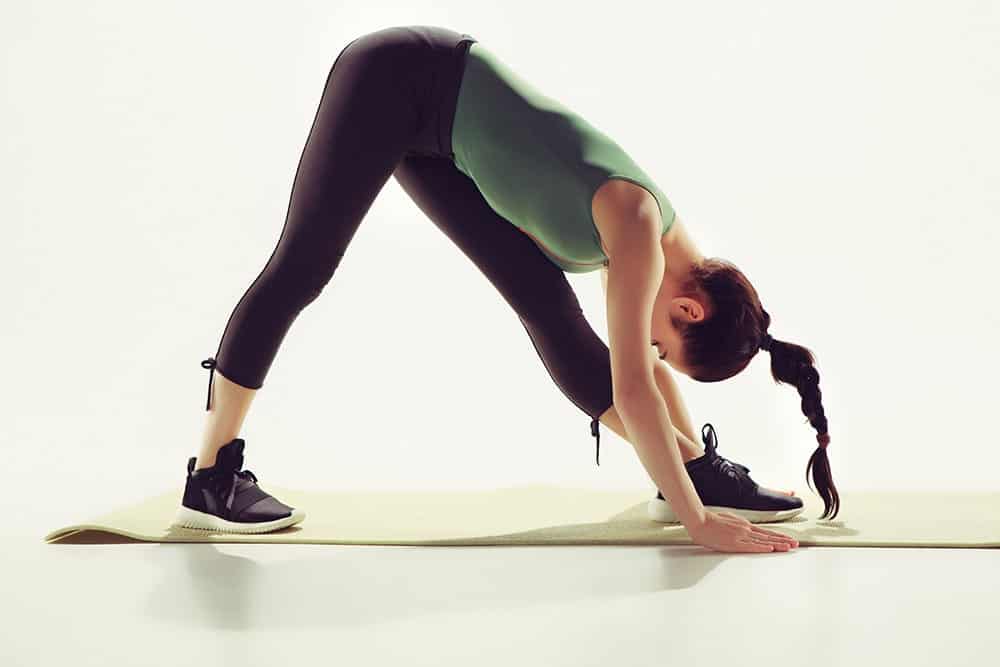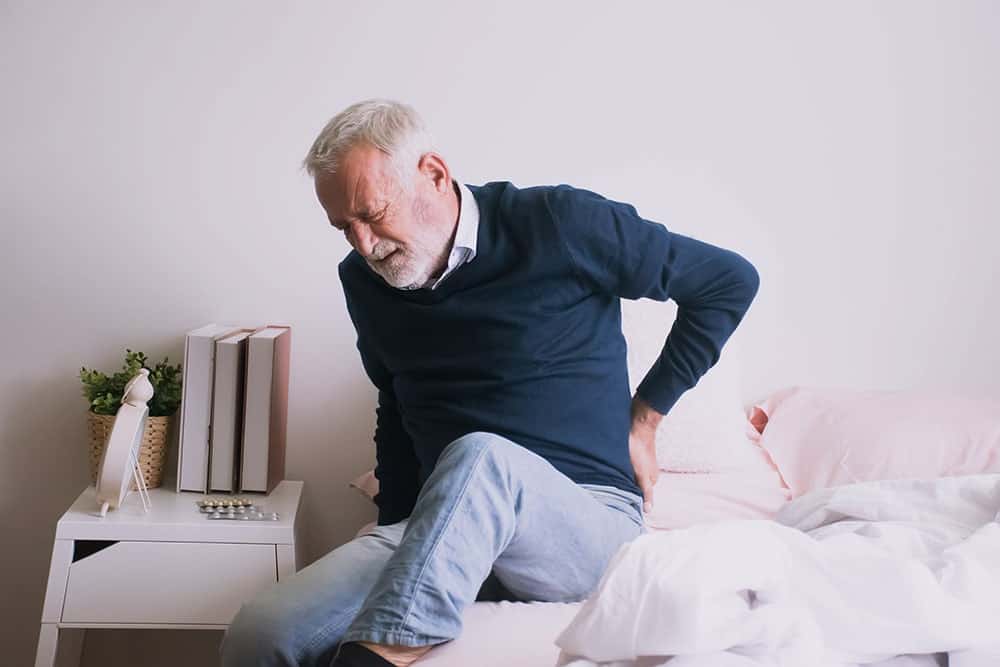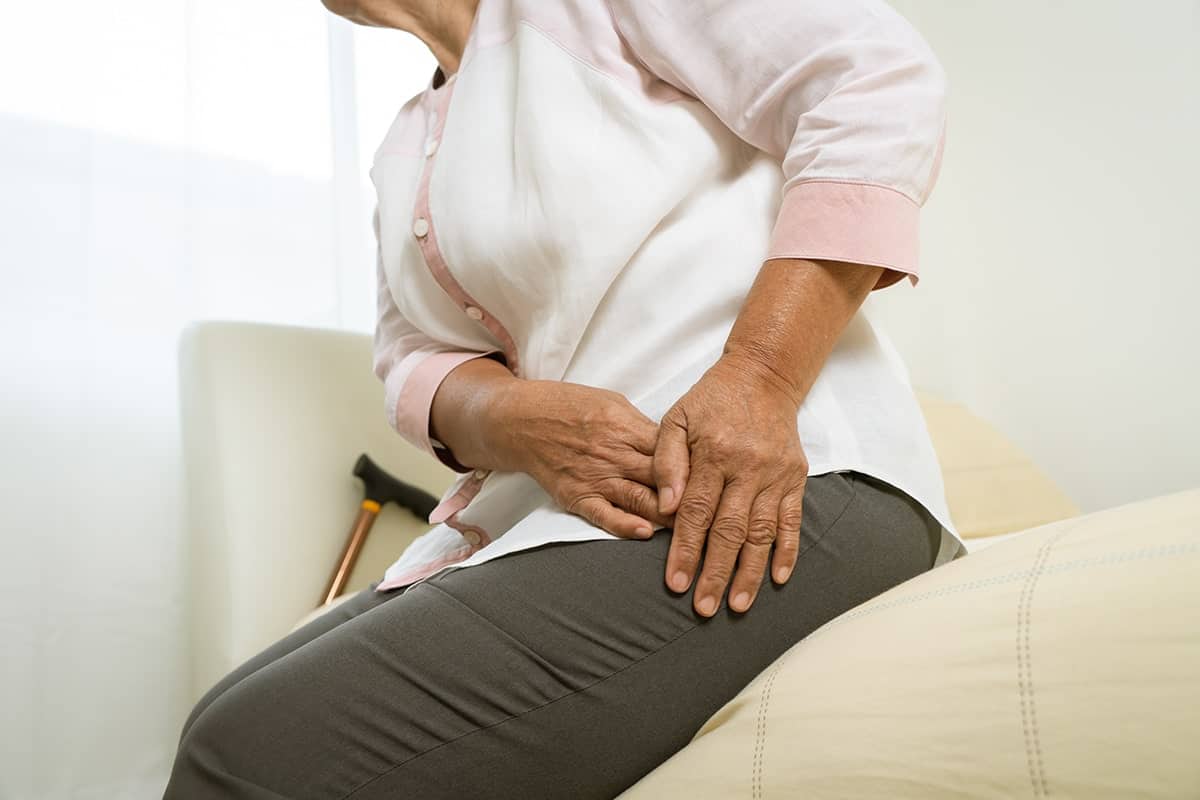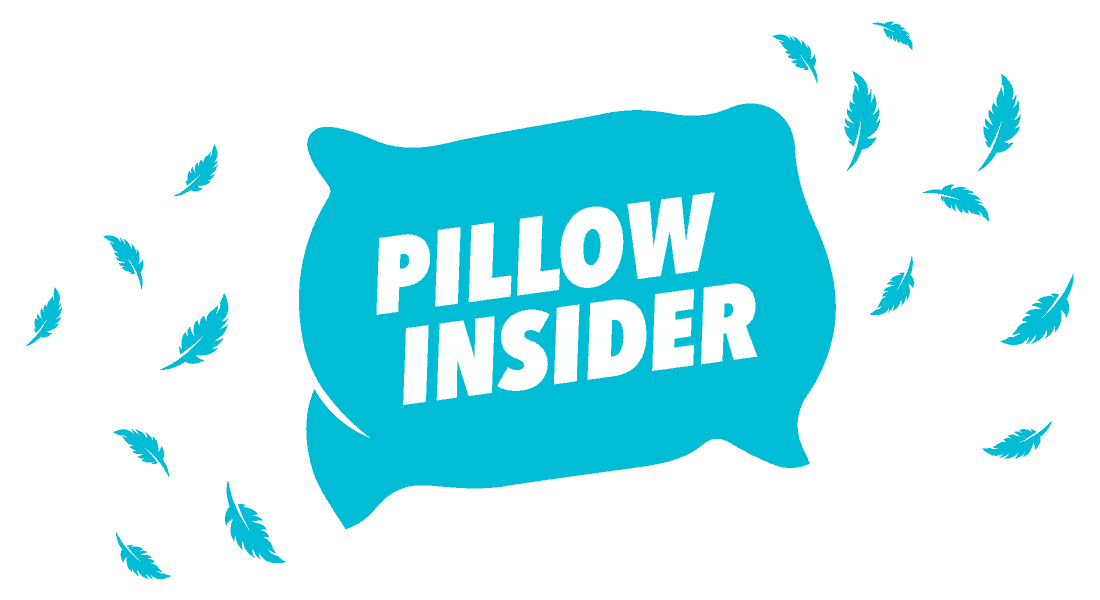Hip pain can keep you up all night and make it nearly impossible for you to get a good night’s sleep. Suffering from hip pain at night also ruins your chances of going through a complete recovery from your injury.
In this article, we talk about the common causes of hip pain and different pain management techniques that will help you sleep better at night.
How to Sleep With Hip Pain at Night
If you’ve ever suffered from hip pain at night, you would understand that sleeping with hip pain is a serious challenge. From using support pillows to trying different sleeping positions, there are a few things you can do to help reduce the hip pain while you sleep at night.
1. Use Knee Pillow
Hip pain is caused or exacerbated by improper spinal alignment when lying in bed. Using a pillow for hip pain while sleeping helps to increase support and also relieves pressure on the hip joints, which helps to manage the pain better. Doctors also recommend using a knee pillow as it keeps the pelvis in a neutral position.
Also, the contoured shape of the knee pillow allows it to stay in place between your legs and not move around while you sleep. It holds your pelvis in a neutral position and aligns your hip and spine, ultimately easing your pain and allowing you to have a good night’s sleep.
Sleeping with a pillow between knees is helpful specially for side sleepers as it helps keep top and bottom legs apart taking away all the stress and reducing pain.
If you are a back sleeper, try placing a pillow under your knees to relax your lower back and buttock area. This is helpful especially when you are experiencing pain in front and back of the hip and pelvis.
2. Place a Wedge Pillow Under Hip for Support
Position a wedge pillow under your hips to relieve pressure by providing elevated and cushioned support to your painful hip muscles or joints.
Wedge pillows can also be placed beneath the knees to relieve pain and pressure. Using it this way will help elevate your legs above your heart, which will improve blood flow and refresh your tired hip muscles that cause pain and fatigue. It will also help to reduce the implications of varicose veins’ and deep vein thrombosis.
The triangular shape of the wedge pillow not only provides optimal support and comfort but also allows it to stay in place better than traditional pillows.
3. Choose the Right Sleeping Position
Your sleeping posture may worsen your hip aches at night and worst case, result in lower back pain, so it is necessary to find out which sleeping position you should adopt to ensure a speedy recovery.
According to rehabilitation experts, there are two sleeping positions best for those experiencing hip pain. Either sleep on your back with legs spread slightly apart or sleep on the unaffected side of the body with a pillow positioned between the knees. Both these positions help to reduce hip pain and also decrease the possibility of re-injury to hip joints.
4. Use a Pregnancy Pillow if Pregnant
Most women experience hip pain during pregnancy when they are in bed because of bad posture and lack of support in the pelvic region. A pregnancy body pillow can help in keeping your hips properly aligned while maintaining the normal contours of your back.
Get yourself a C shaped pregnancy pillow which goes under your head, behind your back as well as between your legs, offering complete support to relieve pressure on the hips. A pregnancy pillow adjusts to the shape and contours of your body and provides great support to the stomach, back, and legs, which helps to relieve the overall pain in the hips.
4. Stretching

Tight muscles can affect your posture and elevate pain in the hips. Stretching helps you build strength in muscles that impact your hip joints, which helps to improve overall flexibility and also prevent pain from reoccurring.
Here’s a simple stretching exercise for you to try out. Stand up, cross your legs, and reach to touch your toes. Maintain this position for 20 to 30 seconds, and you may also hold onto something for balance. Cross your legs the other way and repeat the same.
Some other common stretching exercises for hip pain include hip flexor stretch, double-hip rotation, leg swings and butterfly stretch. Performing these exercises can strengthen your hip muscles and allow you to sleep pain-free.
5. Ice or Heat
Apply heat or ice on the painful areas of your hips. Use whichever method that helps to alleviate your hip pain better. You can also go back and forth between cold and hot packs.
For heat therapy, use a heating pad or take a hot shower for a few minutes to loosen up your tight muscles, which will help in relieving pain and stiffness. Apply heating pads or hot packs 2 to 3 times a day for 20 to 30 minutes.
For cold therapy, use ice or a bag of frozen vegetables wrapped in a towel and put it on your sore hips for 10 to 20 minutes at a time. It will numb the area and relax your hip muscles, which will help relieve the pain.
6. OTC Pain Relievers
Over-the-counter, pain-relieving medications, such as acetaminophen (Tylenol, others), naproxen sodium (Aleve), or ibuprofen (Advil, Motrin IB, others) can help to reduce inflammation that might be causing or aggravating your hip pain.
OTC medications can also help to relieve the occasional pain triggered by activities your hip muscles and joints might not be used to, e.g., gardening in spring after a long winter season spent indoors.
A cream containing capsaicin may also be applied to the skin above the painful joint to reduce inflammation and pain. Such creams can also be used alone or along with oral medications.
However, it is important to consult your doctor if OTC medications continue to fail in relieving your aching hips.

Why Does My Hip Hurt When I Sleep on my Side?
People who prefer sleeping on their sides experience abnormal rotation of the pelvis along with an irregular curvature of the spine. They may also exert excessive pressure on the sides of their hips, particularly in the trochanteric bursa and related structures.
As a result, these body parts can become strained and inflamed due to the relentless pressure exerted when sleeping on the side with an incorrect body alignment.
These effects are further magnified by a worn-down mattress that no longer provides adequate cushioning and support.
Therefore, in order to effectively deal with excruciating hip pain while sleeping on your side, many doctors and physical therapists suggest positioning a pillow between the legs to restore the position and also decrease rotation of the hips and pelvis while sleeping.
Why is My Hip Pain Worse at Night?
The majority of the hip pain cases occur at night as a result of lying directly on top of the painful soft tissue structures on the back or sides of the hip. In more severe cases, hip pain at night may occur due to the build up of inflammation within the joint.
In rare cases, hip pain at night may be a symptom of an underlying medical problem like Sciatica or Tendinitis. As such, if you continue to suffer significant hip pains at night and develop more systemic symptoms including fever, sweats, or widespread pain, it is advised to seek immediate professional help.
Common Causes of Hip Pain
Problems associated with the hip joint itself can lead to pain on the inside of your groin or hip. Hip pain suffered on the outside of your hip and upper thigh typically results in problems with ligaments, muscles, tendons, and other soft tissues surrounding your hip joint. Here are the most common conditions that may cause hip pain:
Bursitis
One of the primary causes of hip pain is bursitis, which is an inflammation of the bursa. Bursae are fluid-filled sacs found all over the body as they serve as cushions between bones and soft tissues like skin, tendons, and muscles.
When bursae get inflamed, they can cause pain. Inflammation of bursae is usually due to repetitive activities that overwork or irritate the hip joint.
Symptoms of hip bursitis may include pain on the outside of your hip and upper thigh. You may also experience pain when getting up after sitting for a long time or while walking, climbing up stairs, squatting, etc.
Hip Osteoarthritis and other types of arthritis
Osteoarthritis and Rheumatoid Arthritis are some other common causes of hip pain, especially in older adults. Arthritis leads to inflammation of the hip joint and breakdown of cartilage.
Cartilage is a firm, rubbery material made up of water and protein that covers the ends of bones in normal joints. It helps to cushion your hip bones by reducing friction in the joints and acts as a “shock absorber.” Cartilage breakdown results in swelling and deformity of joints adding to the overall pain in the hips.
People with arthritis also suffer from stiff joints and have a reduced range of motion in their hips.
Hip Tendonitis
Tendonitis refers to the irritation or inflammation of the tendons. It is usually caused by stress from repetitive exercise or overuse, such as running, throwing, jumping, or from sudden and sharp movements.
Repetitive movements and activities put a strain on the muscles, tendons, and ligaments that support the hips. When they become inflamed due to stress and overuse, they can result in pain and prevent the hip from functioning normally like it usually does.
Therefore, make sure to warm up before exercise, gently stretch afterward and take regular breaks when exercising to avoid putting excessive strain on your hip muscles and joints.

Frequently Asked Questions
How do I know if my hip pain is serious?
If at-home treatment measures such as ice packs, warm compresses, OTC medication etc. do not relieve the pain in your hips within one week, it’s best to see a doctor.
You should also seek immediate medical attention and ask someone to take you to the emergency room if you experience intense hip pain from an injury.
Other symptoms of a serious hip injury may include the inability to move your leg and hip or bear weight on the affected leg. There may also be sudden swelling, and you may show signs of infection such as fever, chills, and redness.
If you experience any of these symptoms, it is necessary for you to get immediate medical attention.
Does walking help hip pain?
Walking is a low-impact activity that can help relieve hip pain, arthritis, stiffness, and swelling. It helps to build stronger muscles and keeps joint stiffness at bay.
You should initially start slow and easy and progressively increase both your pace and walking time. For example, if you are able to walk for 7 minutes each day this week, aim for 12 minutes the next week. The goal is to remain consistent and committed to the activity.
If you feel pain in a weight-bearing joint like your hip, then you may use trekking poles to give yourself stability and knee pain relief while walking long distances.
What exercise is best for hip pain?
There are some specific exercises that can help manage your hip pain. These work the parts of your body that support hip joints, including your legs and core. Such exercises include a knee-lift, external-hip rotation, double hip rotation, hip and lower back stretch, hip flexion, and more.
These flexibility and strength exercises are important for relieving hip pain. They may cause temporary discomfort in the beginning but will help with pain management in the longer run.
Furthermore, it is best to work with a professional, like a physical therapist who can help you get into a routine and also fix your form and posture.
